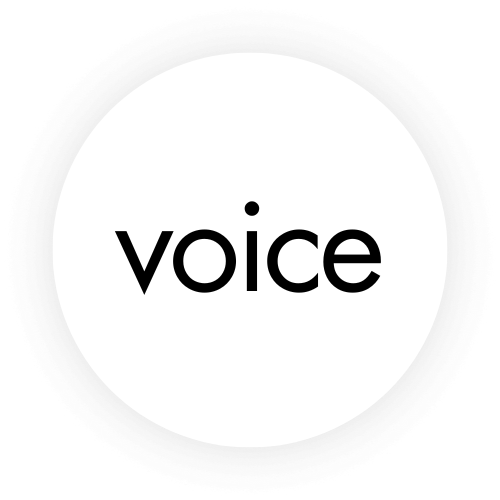We Analyzed 7,490,000 YouTube Videos
Here’s What We’ve Learned About Creating Authentic Content

WHAT YOU’ll SEE HERE

Written by Ray Voice
Last Updated:
We’ve collected and analyzed data from almost 7 and a half million YouTube Channels.
That’s almost 11.3% of all YouTube channels.
Today, we’ll share our key findings and use that data to help you create better YouTube content.
This is one of the most important studies done in YouTube Audience Retention, getting more subscribers, and making more revenue from both ad-revenue and sales.
Let’s dive into it!
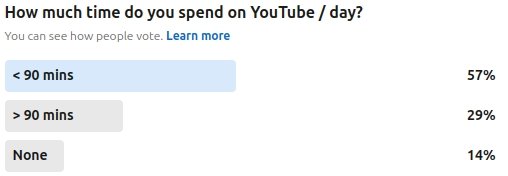
Note: The data-collection methods included scrapping YouTube videos, their meta-data, transcripts, and manually tagging them using dynamic tags. i.e. If an analyst discovered elements in a video that weren’t accurately described by a combination of existing tags they had the ability to open a ticket (for a discussion) to start adding a new tag to videos and all the previously analysed videos would be re-tagged as needed at a later stage, after the discover of several new tags.
Note: Voluntary surveys and interview-rounds were conducted with key channel owners to further understand the nature of our findings.
Key Findings Summarized
- Videos with a voice-over consistently performed better than talking-head videos or Vlogs where you directly talk to a camera in terms of views.
- Channels with high-quality talking-head video majority significantly outperformed channels with voice-over video majority in terms of views, sales, and lead generation benefits.
- Videos with less white-space performed better than videos with more-white space in terms of views.
- Longer short-form videos out-performed shorter short-form videos of the same quality in terms of views.
- Content with a “Storytelling” style outperformed every other type of content in terms of views. (e.g. reaction content, teaching-style content, non-storytelling interviews, non-storytelling skits, etc.)
- Content that delayed the main pay-off of the video (e.g. asked a question and then took a long time to answer it.) performed better in terms of views than content with the main payoff in the earlier part of the video.
- Content were the background was changing was more effective at retaining attention as content with a changing foreground i.e. animations, zoom-in/zoom-outs, etc.
- Content with giveaways performed better than content with no-giveaway element in terms of lead generation.
- Channels that stick to one video-style grew faster in terms of subscribers than channels using multiple styles or inconsistent styles throughout their videos.
- Videos that showed some sort of transformative demonstration (e.g. fitness, house remodel, before-after makeup, etc.) performed better in terms of both views and sales.
- Videos with a strong verbal hook or statement within the first 5 seconds significantly outperformed videos with no strong statements or hooks early-on.
- Videos where the footage complemented the voice-over significantly outperformed videos where the voice-over complemented the footage.
- Videos where the content creator showed their face performed better than where the didn’t.
- The maximum efficient face time for a 15-minute video was 4 minutes a 39 seconds.
- Well-edited content didn’t perform any better than content that looked more authentic, unedited, or uncut.
- Writing effective content scripts with picked to be the most important skill in a survey of over 11,800 YouTubers. Many larger content creators admitted to pre-scripting content that felt unedited or authentic.
- Over 1300 large YouTube channel owners recommend doubling down on content ideas and content elements that work for you.
- Posting-time has no affect on channel growth. Even for channels with a demographically focused audience.
- Content creators who admitted to copying video ideas and video elements from well performing content of other channels in their niche showed faster growth in channel views.
- Deleting low-performing content is considered best practice by over 4000 YouTube channel owners. However, videos can improve in performance and even go viral after several years of posting them.
- Content from a personal channel i.e. a personal brand, performed better against similar content from a company page.
You can see further details of all this below.
Voice-over Videos Outperform Talking Heads
We’ve seen Videos with a Voice-over over some B-roll outperform Talking-head style videos where you just talk to the camera or do a Vlog talking to the camera.
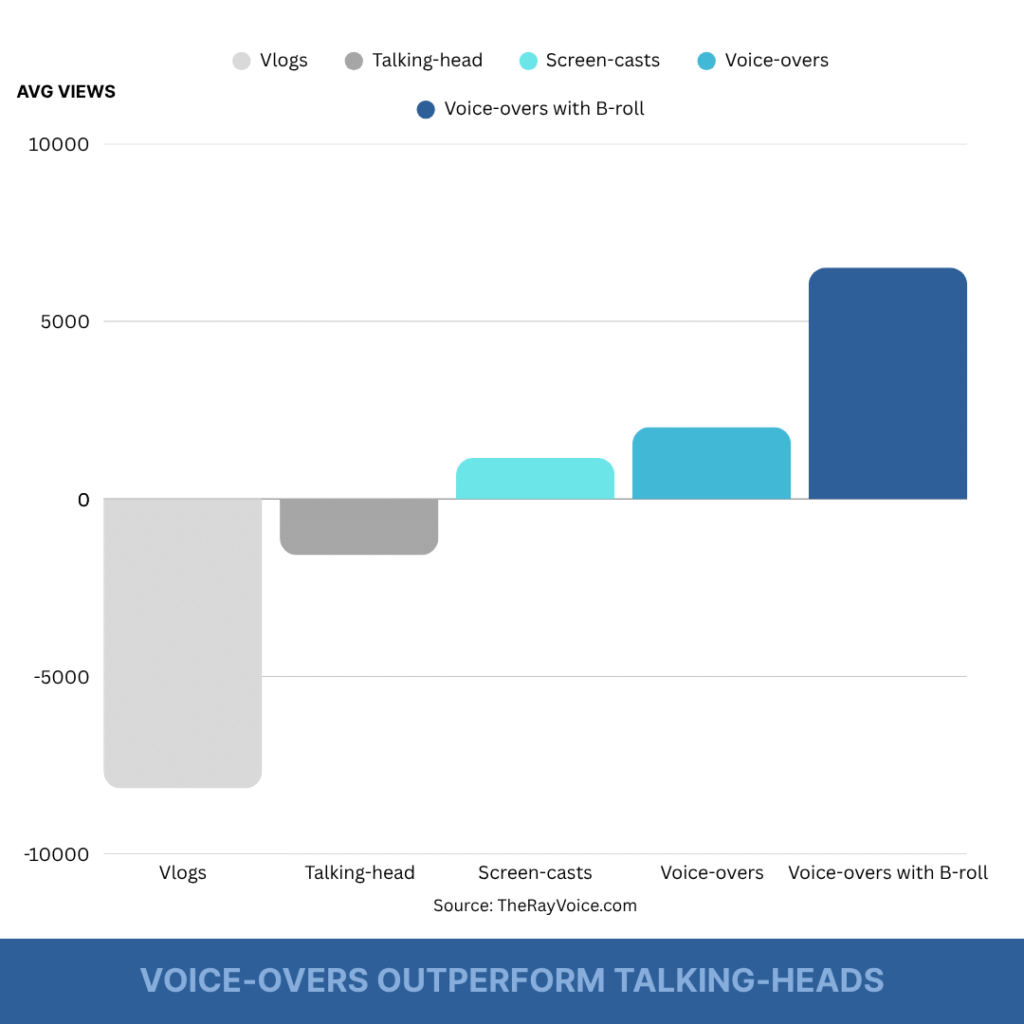
A lot more channels attempt to create Vlogs compared to Voice-over videos, leading for Vlogs and Talking-heads both to have a really high failure-rate and a negative average view stat.
Essentially, only a few channels can get the Talking-head format right and it’s much easier to create Voice-over videos with a B-roll.
Also observe how voice-overs over random visuals performs significantly worse than voice-overs with B-roll style visuals.
Key Insight: You’re more likely to create good content with voice-over + B-roll style videos in contrast to videos where you talk to the camera.
Talking Head Videos Are The GOAT
The thing you need to know about talking head videos is that only a few channels have perfected the art of creating them properly.
This includes pre-scripting them, editing them to sound natural, providing visual stimulation (e.g. through hand gestures, animations, etc.), selecting the right content ideas for them, and parting proper acting with high-quality storytelling that makes the content look authentic and un-cut.
When we looked at channels that were great and creating Talking-Head videos we saw a remarkable consistency in their views, growth in views, and growth in subscribers.
When surveyed, most of these channel owners reported getting a good amount of ad-revenue, affiliate revenue, and opt-ins.
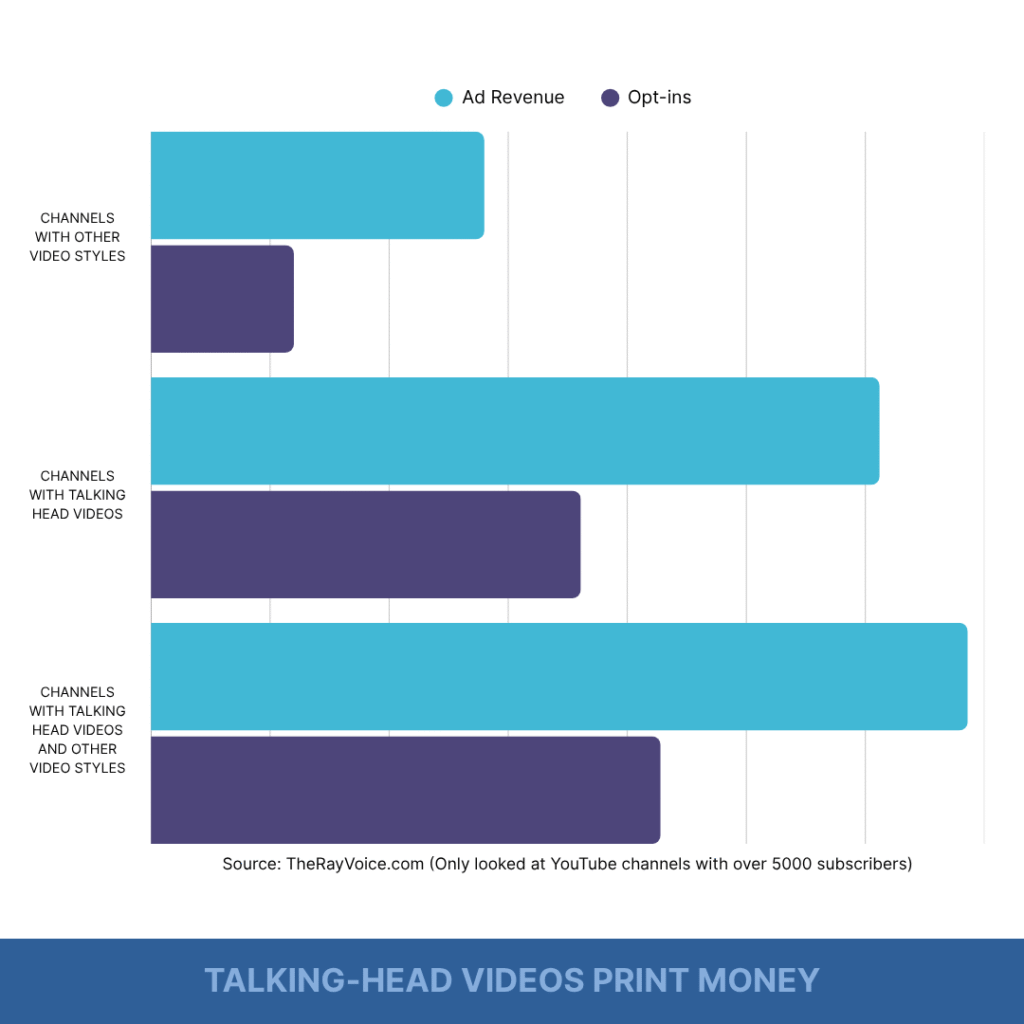
As you can see from the stats, talking-head videos contribute significantly to the success of a channel.
Key Insight: Talking-head videos are really hard to create and although they look candid, they’re quite often pre-scripted and editing to look and feel authentic and unedited.
Less White-space = Better Performance
When asked, most YouTubers we surveyed agreed that “removing silence” (i.e. between spoken sentences or changing scenes) was a good strategy to improve content performance.
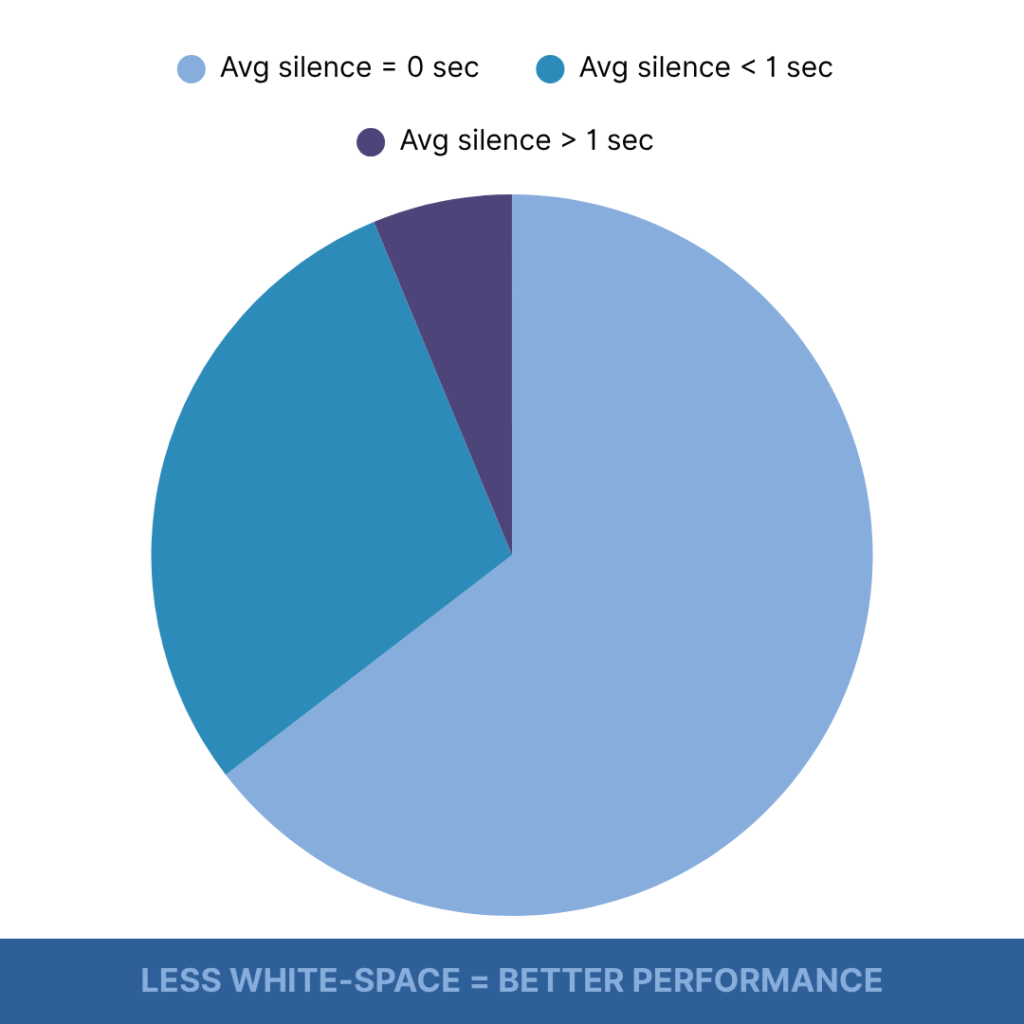
When we looked at videos labeled “well-performing” and analyzed them, 64/6% of them were videos were mid-sentence silence closed to 0 (no-silence), 29.2% of them had some silence but usually under 1 second, and 6.3% of them had noticeable silence between spoken sentences.
This suggests that keeping the silence between spoken sentences to a minimum results in better performing content. However, contributing factors could also be that fast paced videos have a better retention-rate, or are perceived as more valuable content. The factor of more information condensed in less space could also be a contributing factor to that.
Key Insight: Remove the silence between sentences so they sound slightly overlapping. This retains attention of the viewer better.
Longer short-form > Shorter short-form videos
We compared longer YouTube shorts against shorter YouTube shorts from the same channel. We did this will millions of YouTube shorts. In almost all cases, longer YouTube shorts outperformed shorter YouTube shorts.

However, we didn’t look at YouTube shorts longer than 60 seconds in this study. A shorter YouTube shorts refers to anything less than 40 seconds long or exactly 40 seconds long. A longer YouTube short refers to anything longer than 40 seconds long.
This suggests that longer YouTube shorts will perform much better than shorter YouTube shorts. Contributing reasons may be retention and dwell-time. Since people spend more time on the YouTube platform when watching longer videos, it’s in the interest of YouTube to push that content to more viewers. The psychological factor in play here is that viewers may get more responsive to your brand and face the longer they watch your content.
Key Insight: Make longer YouTube shorts. Over 40 seconds ideally.
It’s All About Storytelling!
We compared millions of videos labeled “Good Storytelling” against other videos on the same channels with the “bad storytelling” label. Videos labeled “good storytelling” always outperformed videos labeled “bad storytelling” in terms of views. Skits with good storytelling beat out skits with bad storytelling. Podcasts with good storytelling beat podcasts with bad storytelling. This trend was observed in all content formats we analyzed without exception.
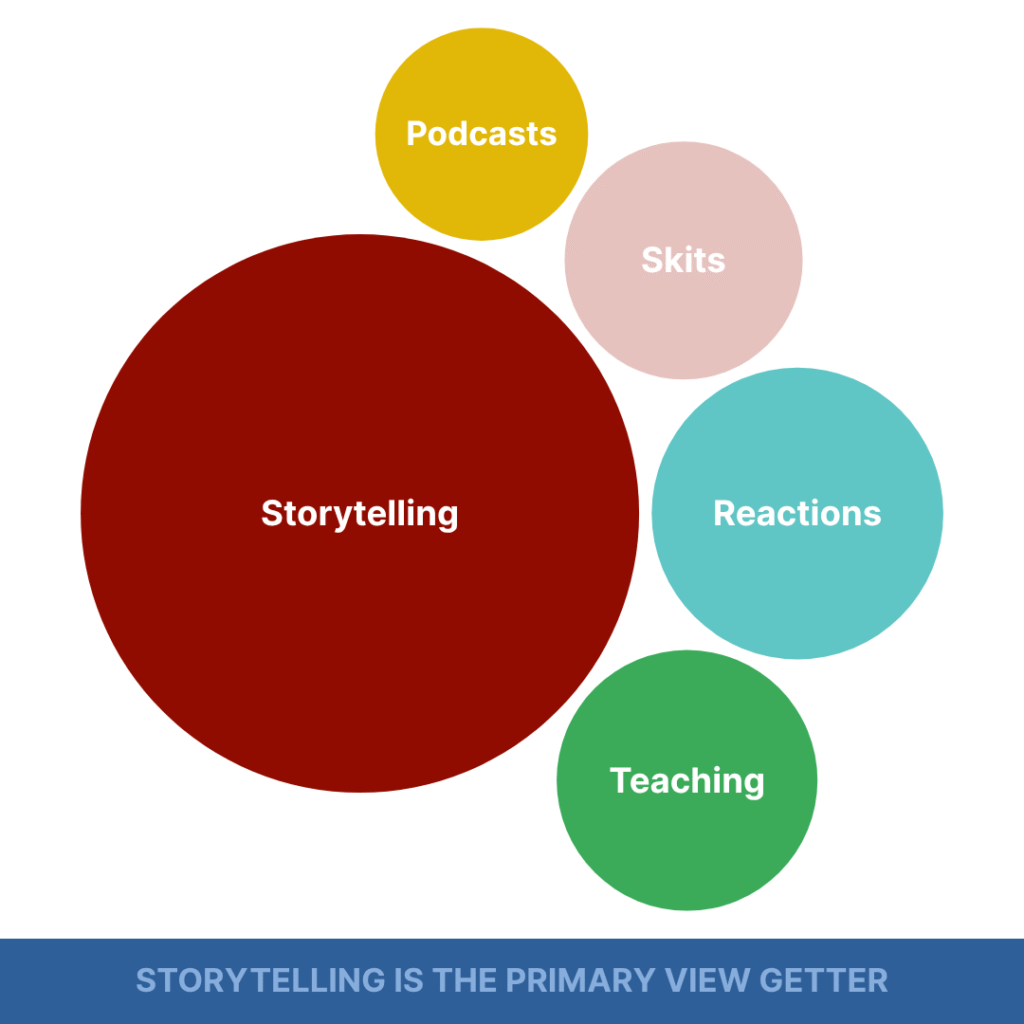
Most YouTubers with large followings agreed that they have their scripts pre-written by a professional. In fact, very few of them wrote their own scripts. One survey taker with 11,212 followers (recorded at the time of the survey) said “My channel didn’t take off until I hired a freelancer to write my scripts.” (Kept anonymous for privacy policy compliance of the survey)
Key Insight: Hire a professional script writer to write your video scripts, storyboards, and screenplays.
Audience Retention Hack #1
If you’re asking a question, or promising to show something to the viewer, then delaying the big reveal is essential to high retention-rates on your YouTube videos. This was observed consistently throughout all the videos we analyzed.
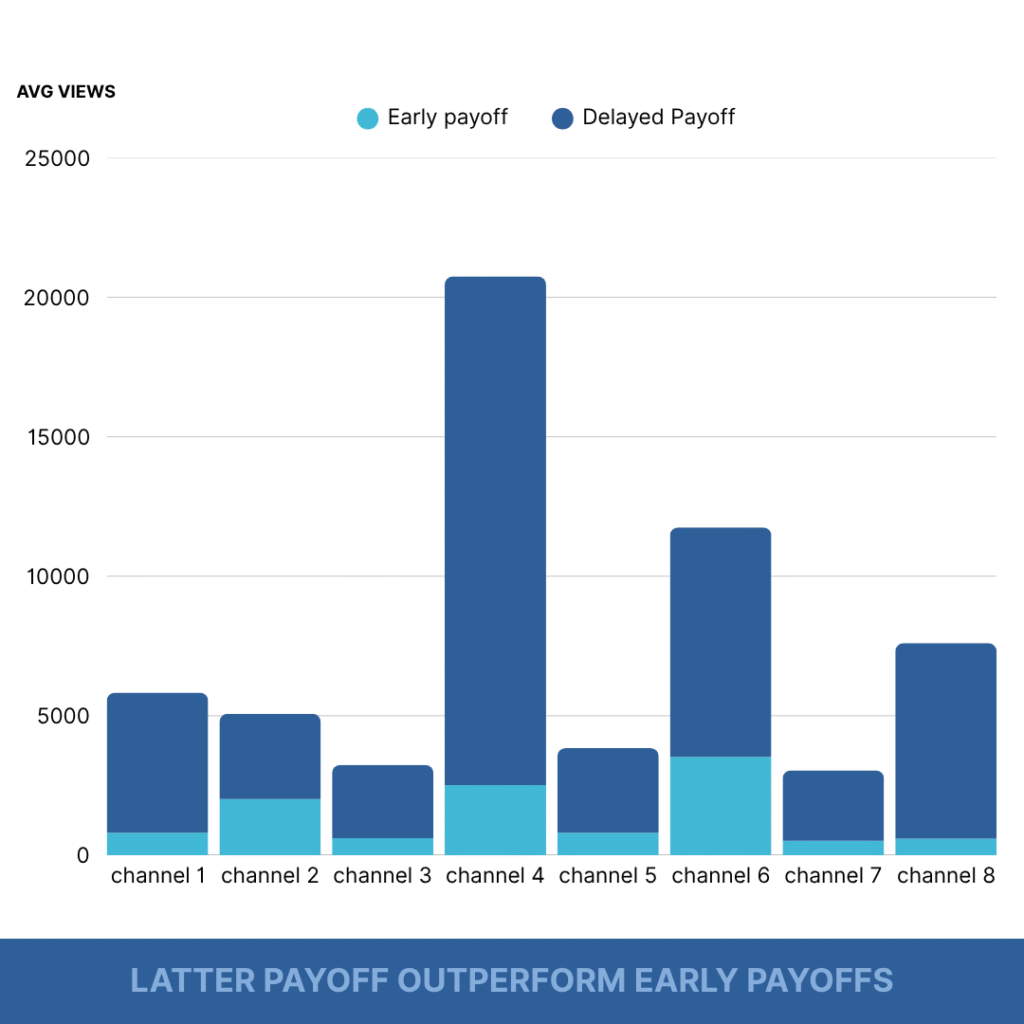
We compared videos labeled “delayed payoff” against videos labeled “early payoff” and videos with the primary payoff revealed at a later point in the video constantly outperformed videos with an early payoff. Notice how big of a difference these video’s have in terms of performance. Some channels are only getting a few thousand views for their early payoff videos but tens of thousands of views for their delayed payoff videos.
The only exception observed was when a bigger payoff was introduces right after revealing a smaller payoff.
Key Insight: Hire a professional script writer to write your video scripts, storyboards, and screenplays.
Audience Retention Hack #2
Changing the background, recording in a different room, add a background effect, change your shirt, are all effective viewer retention hacks. They’re just as effective as adding jumpy animations, sound-effects, zoom-in / zoom-outs, and such, if not more.
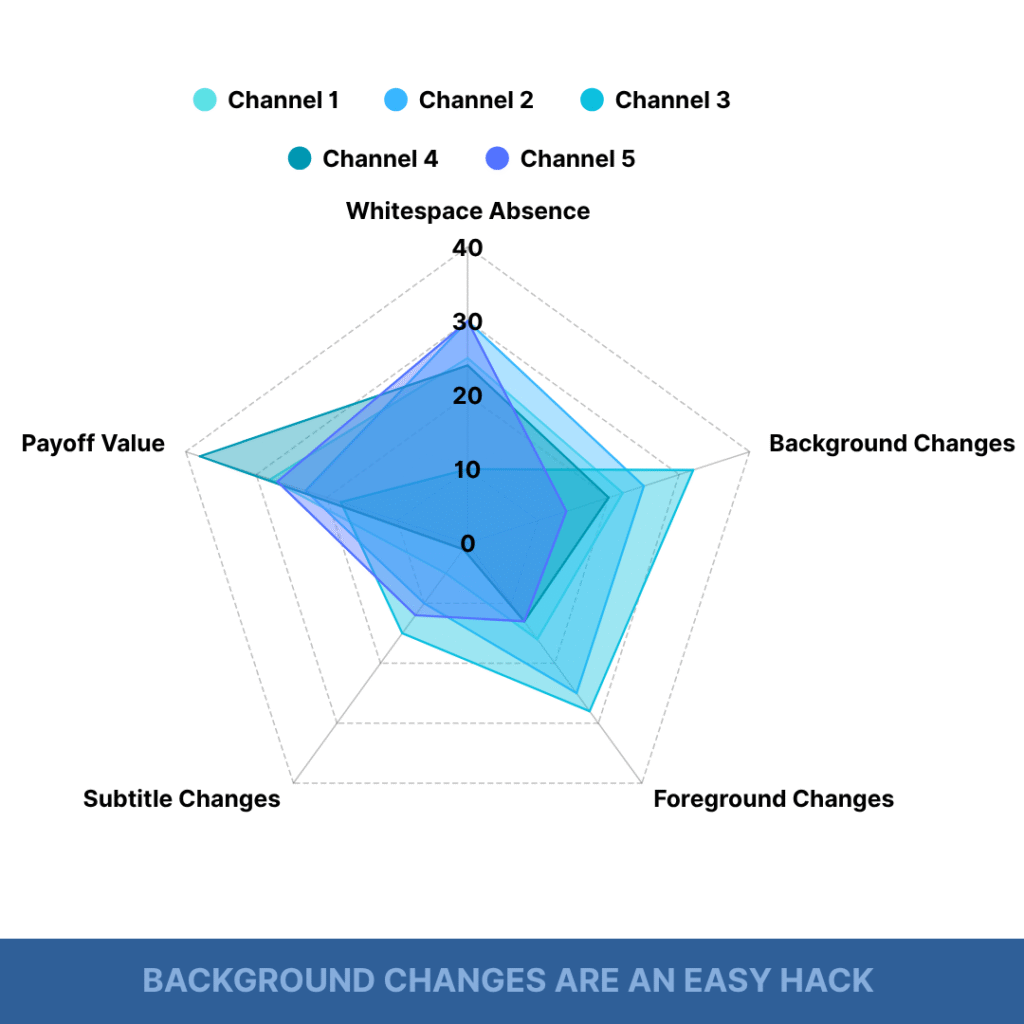
In this graph, we’ve shown you 5 very different channels and their use of retention tactics to retain their audiences attention when they’re watching a video.
- Notice how payoff value is far more important for audience retention than anything else.
- Notice how background changes and foreground changes have barely no difference in terms of their retention effect.
- White-space absence, i.e. removing silence is also an essential factor for retention as previously discussed.
Key Insight: To retain your audience’s attention focus on the payoff value instead on retention-hacks. Making bigger promises will hoke your audience in for longer.
Lead Generation Hack #1
To get more leads from your content, the best methods remains to give them a lead magnet or access to a highly valuable resource that aligns with their goals and buyers journey.
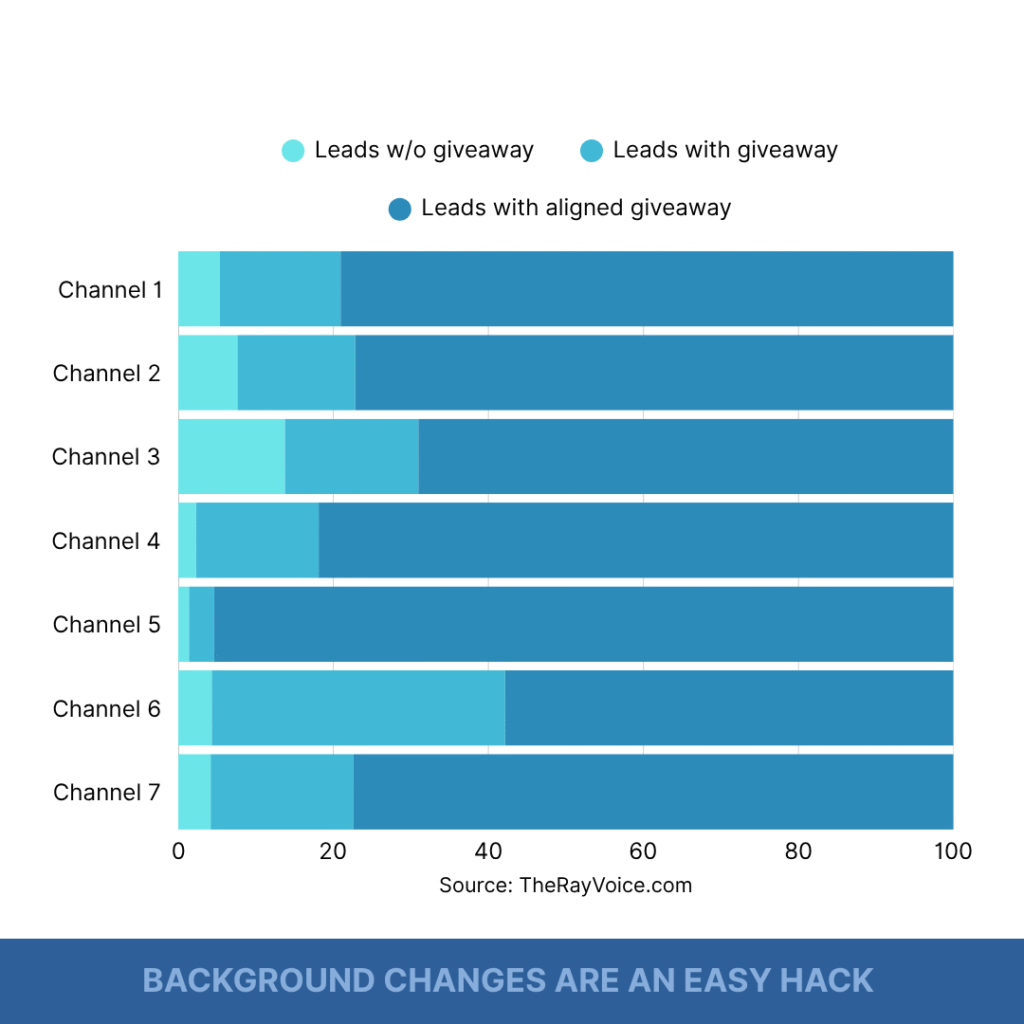
We looked at 144 channels that were owned by business owners trying to get leads for their business in the services or coaching industry. 10% of this sample was also trying to attract investors and our funding sources. Here’s what we observed.
- When they used no lead magnets they didn’t generate that many leads. A follow-up point on that is that many of the leads generated without a giveaway never shown up on sales calls, or didn’t end up buying either.
- When a generic lead magnet was used the channels saw double, triple, quadruple, or in rare cases even 10X more leads coming their way. The leads were also more interested in making a purchase and were generally easier to close which directly led to shorter sales-cycles.
- When a lead magnet that aligned with the video’s topic was used the amount of lead inflow also skyrocketed. E.g. A video about traveling to a different country giving away a list of hostels they approve staying at got far more leads than when they offered a generic lead magnet of “Best destinations to visit” in that country.
Key Insight: Give them a free giveaway in some of your videos. Make sure it’s aligned with the video topic. E.g. If a handyman is teaching his apprentice how to do some work he needs to give away the tools to do that work too. That’s how he’ll be recognized as a good teacher, right?!
This Article Will Be Updated With Further Details Soon… (Check again tomorrow)
Contact Ray and his team by using this form for commercial intent. (Or see info below for PR requests or other inquires)
If you want details on how we conducted this study you can reach out to us at contribute@therayvoice.com for details, inquires, podcast requests, etc. Only valid inquires from reputable sources will be entertained. The raw data we use won’t be made available for public for now.
